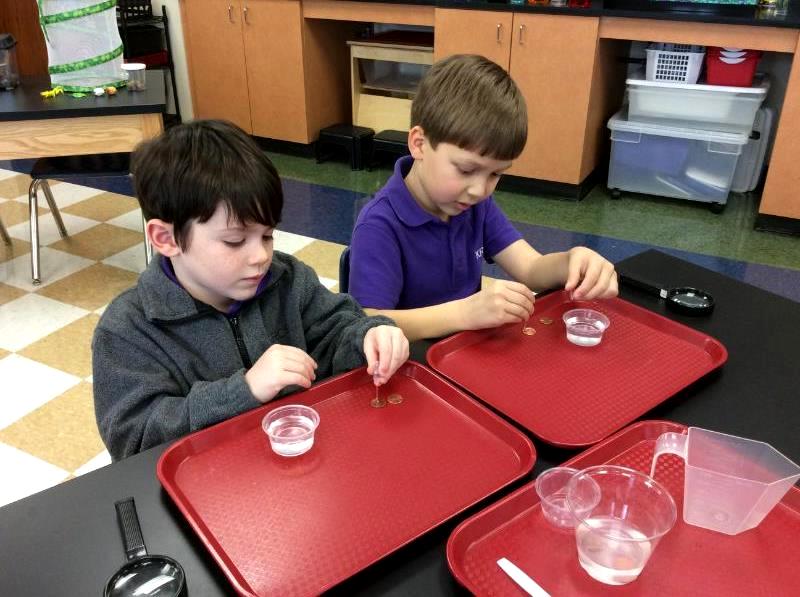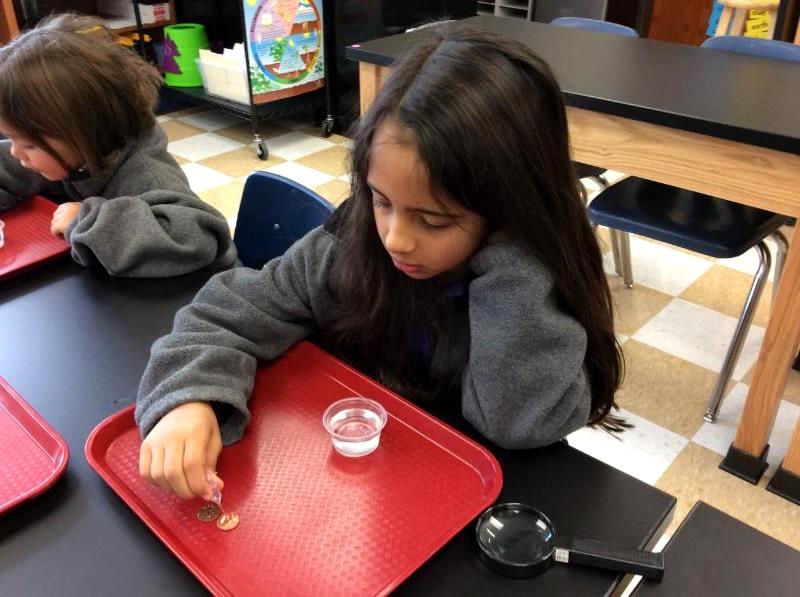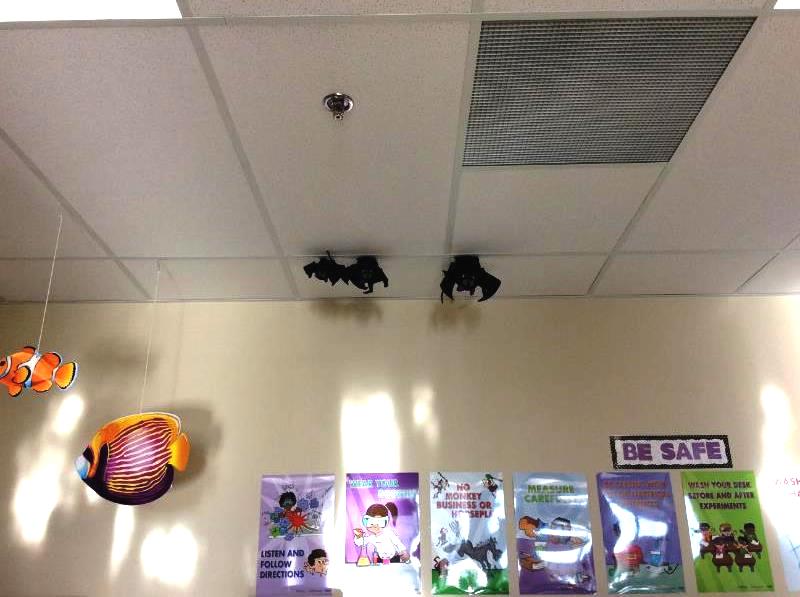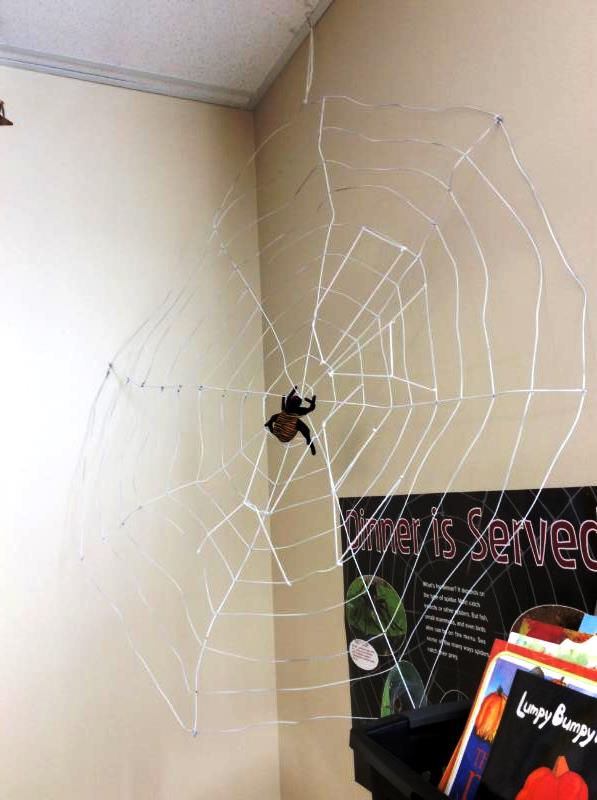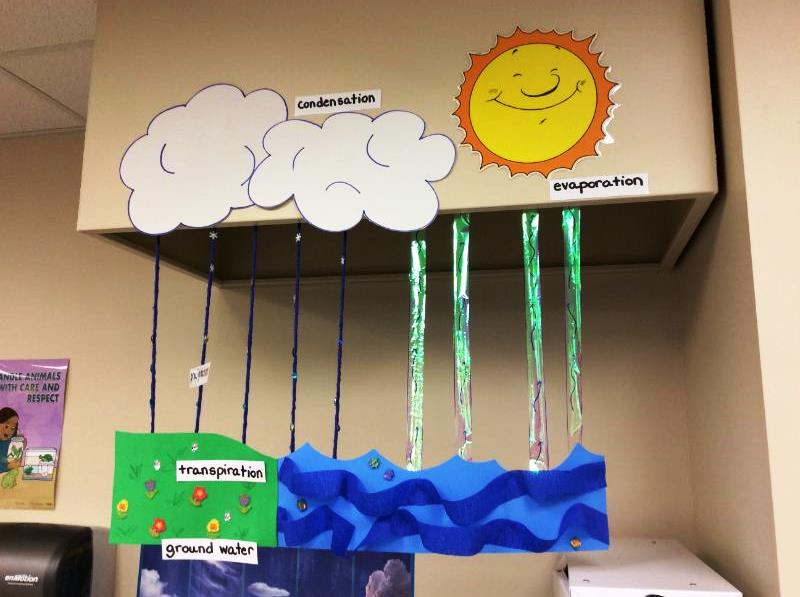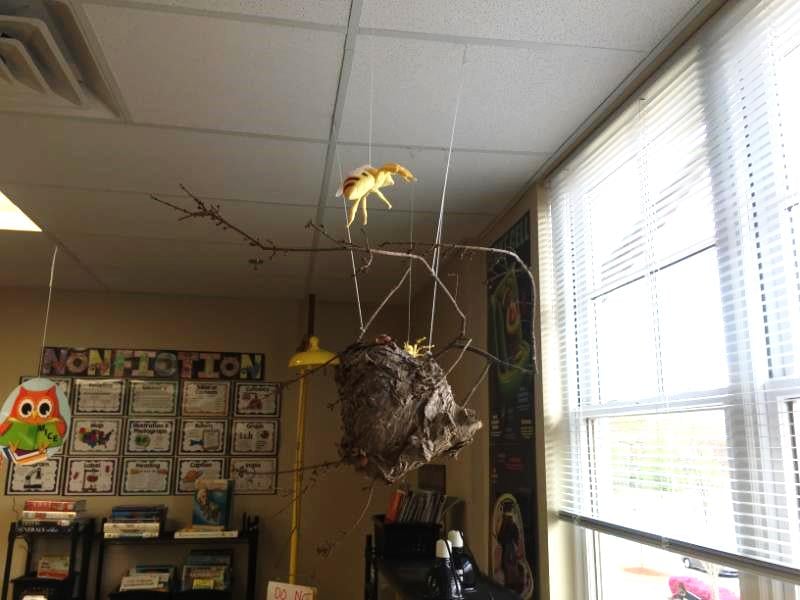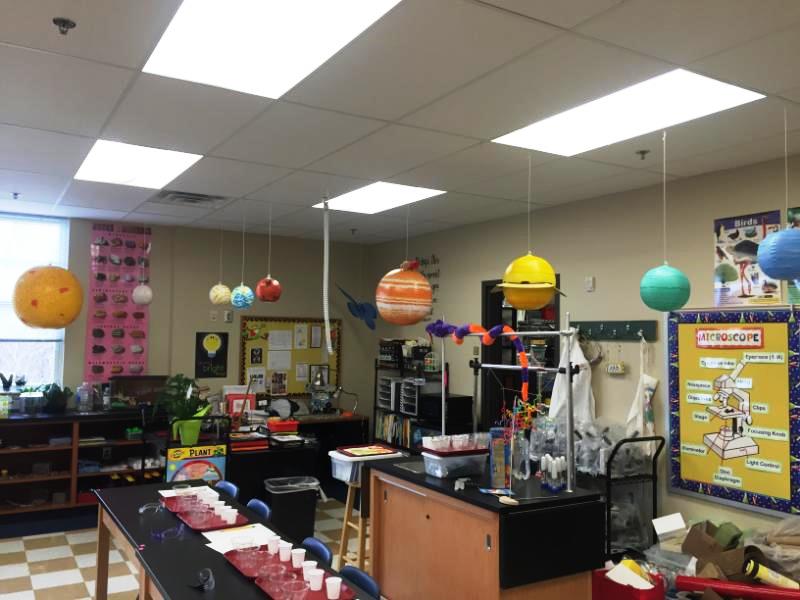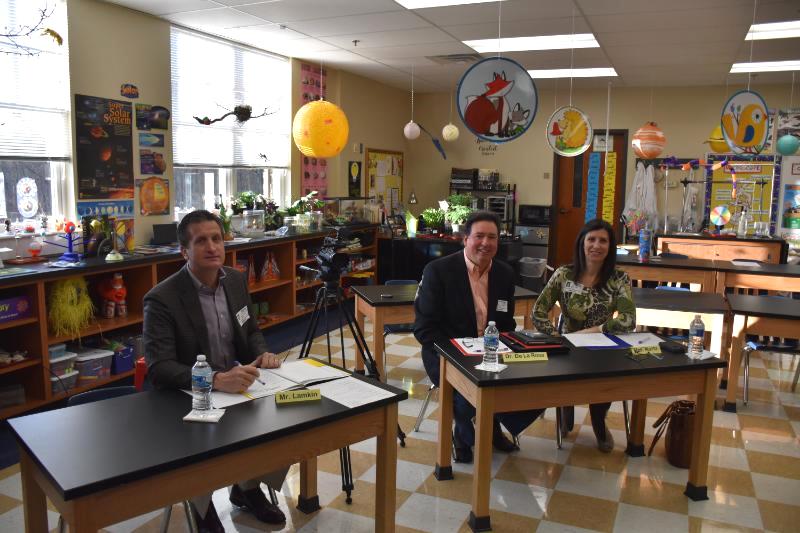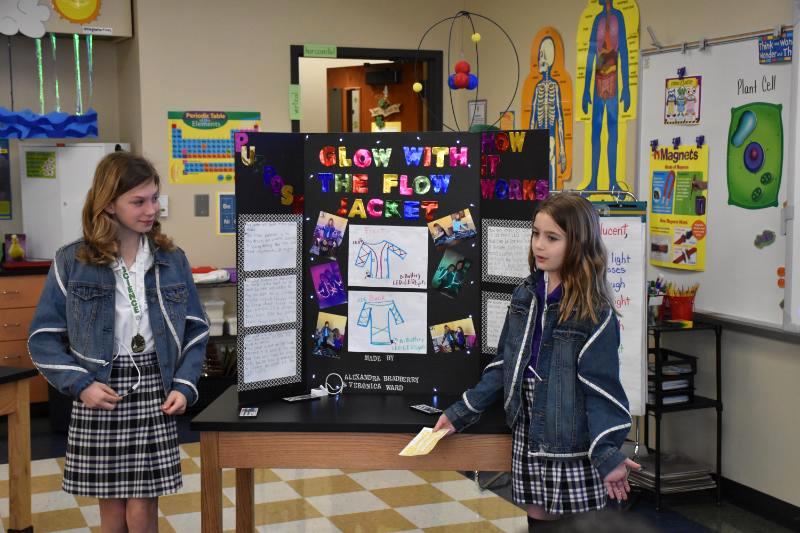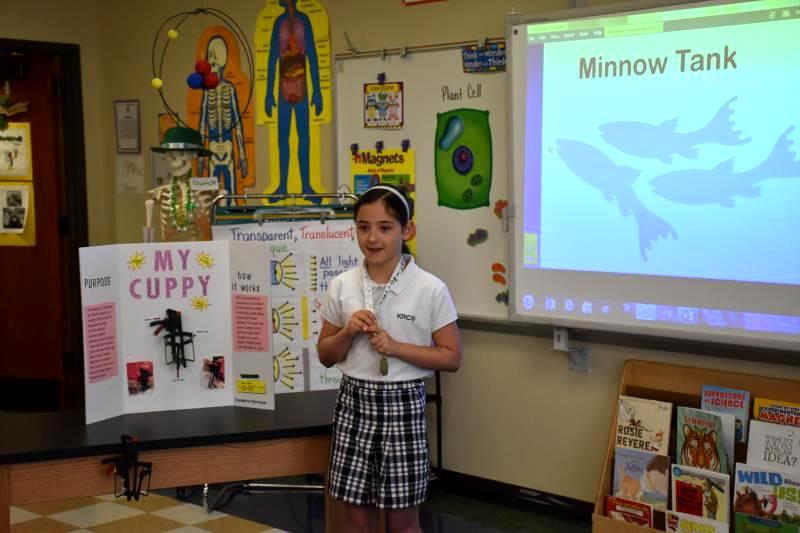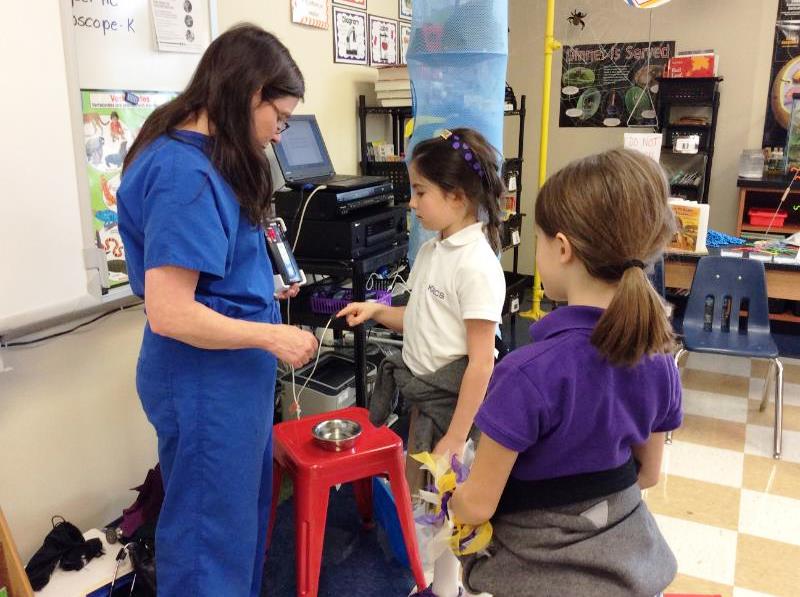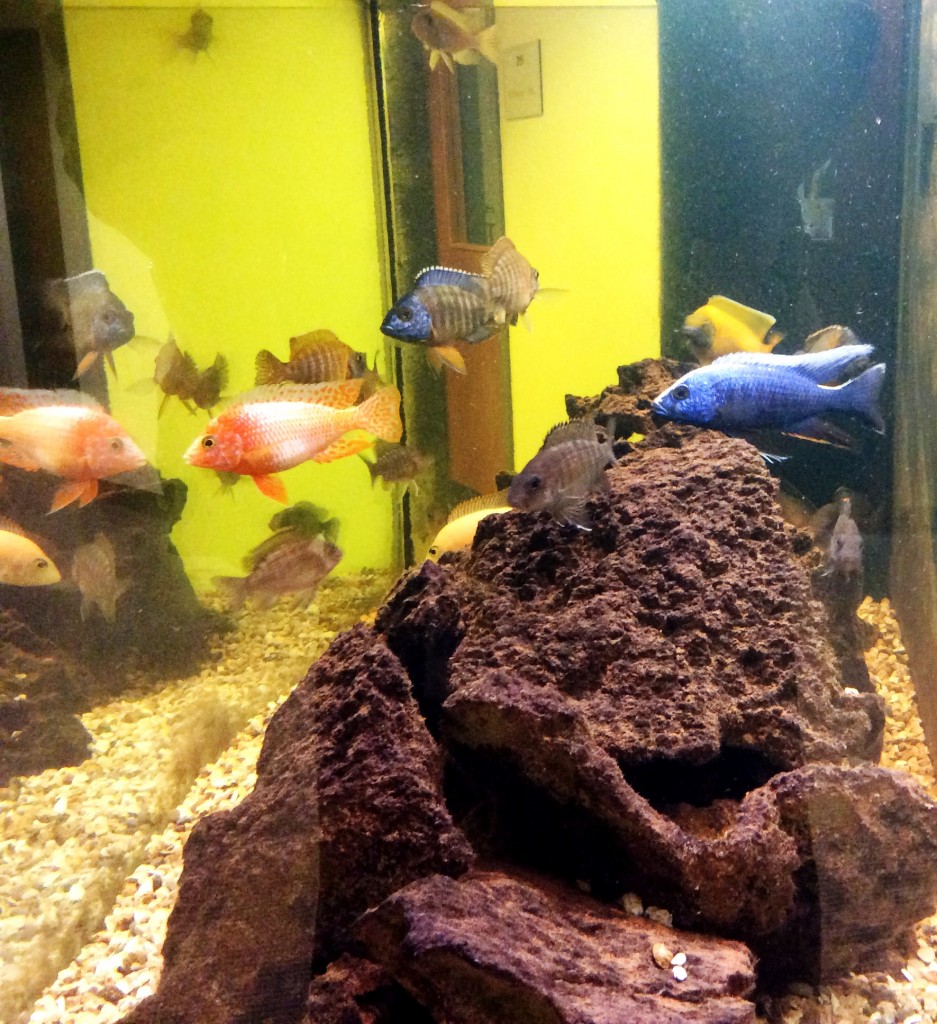In honor of Abraham Lincoln’s birthday, kindergarten scientists learned about the history of the penny and how coins are minted. Click here to watch a video. Then we used hand lenses to observe the pictures, words, and dates on our pennies.
Oxidation causes pennies to tarnish. Oxidation also occurs when metals rust and apples turn brown. We tried cleaning pennies with soap and water with no success. Then we mixed vinegar (a weak acid) and salt together. Our pennies were bright again. Click here to learn more about this investigation.
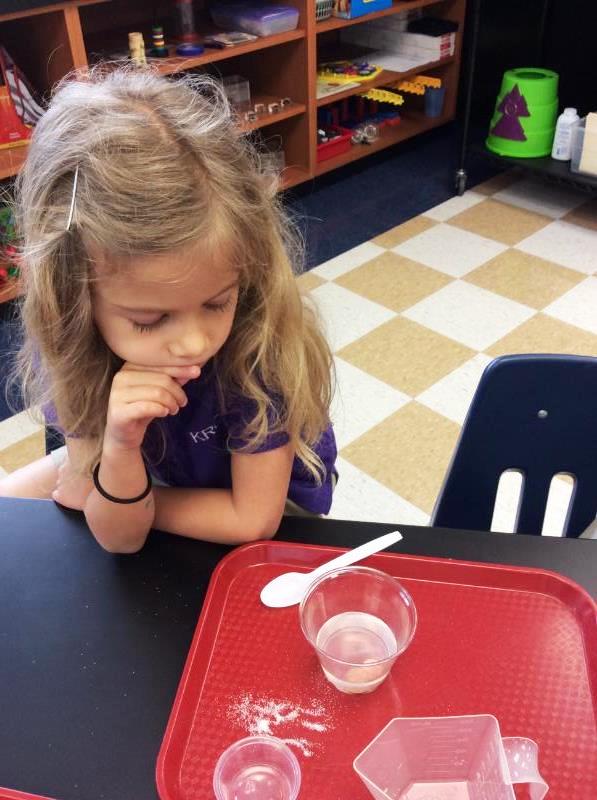
I rinsed off the salt and vinegar solution from some of our pennies, but I left it on others. What do you observe? Why are the pennies green? The Statue of Liberty is green for the same reason- oxidation and acid rain. Click here to learn more about the Statue of Liberty.
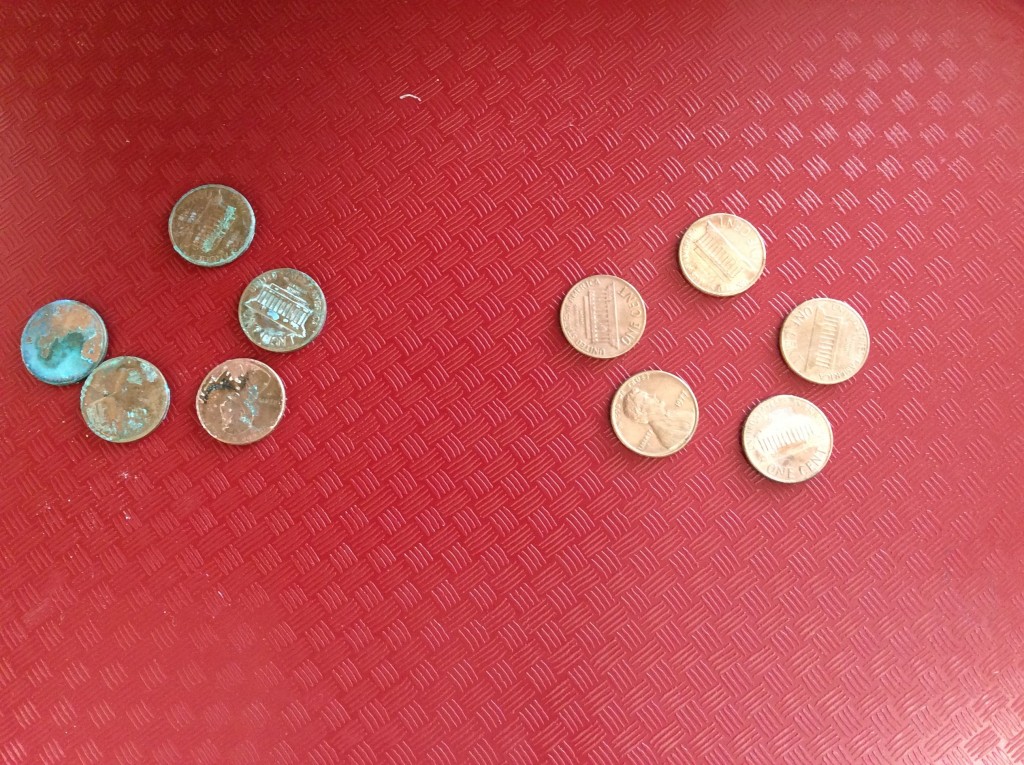
Before our next investigation, we practiced using a pipette. It works like an eye dropper.
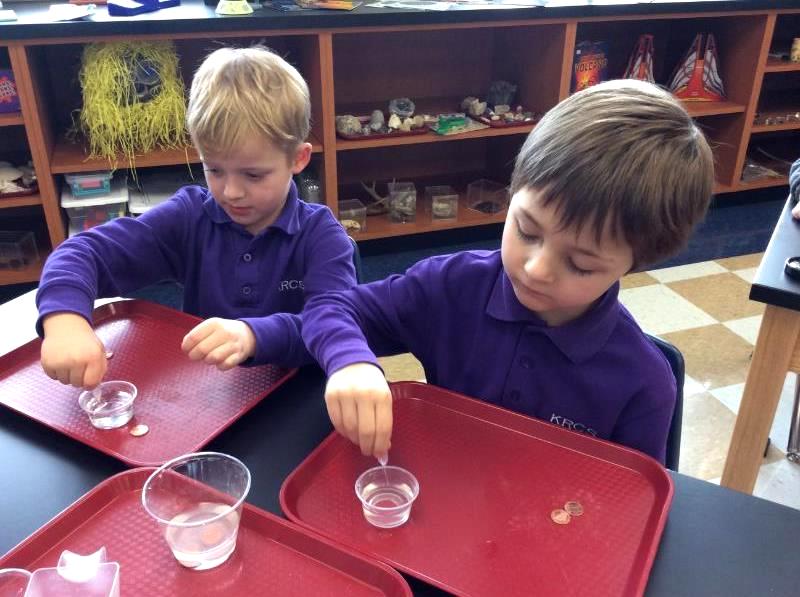
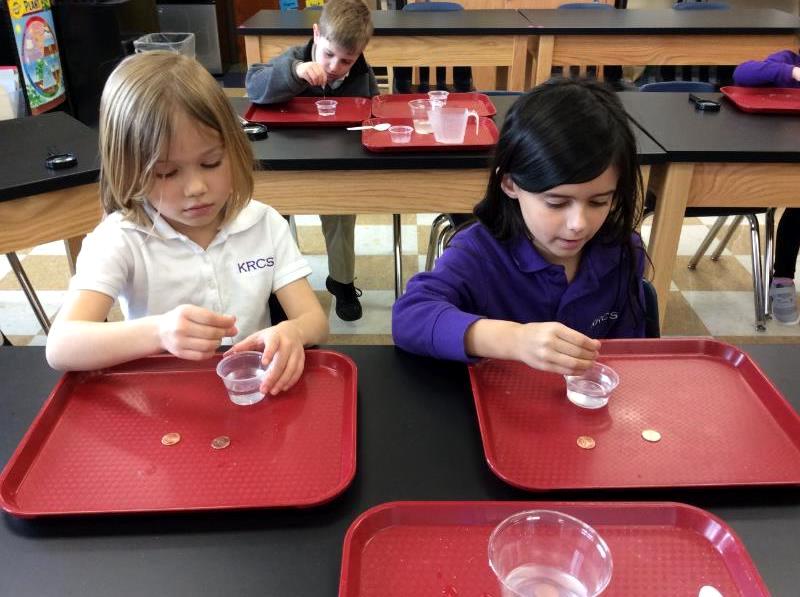
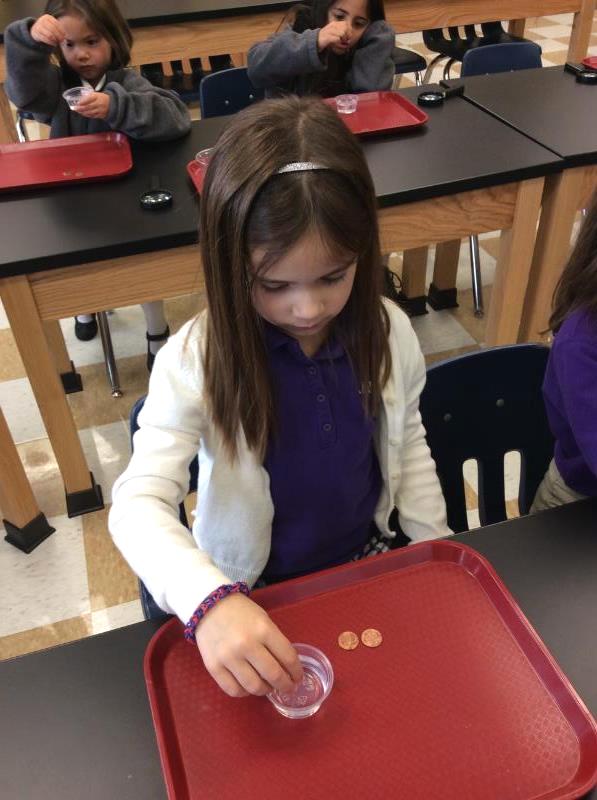
I explained that water molecules like to cling to each other and introduced the concepts of surface tension and cohesion. I asked my scientists to hypothesize how many drops of water they thought could fit on the surface of a penny. Most thought the number would be between two and ten. They were amazed when they were able to fit between 20 and 40 drops on their pennies. It didn’t take long for one of my scientists to notice that a water bubble (or dome) formed on top his penny.
